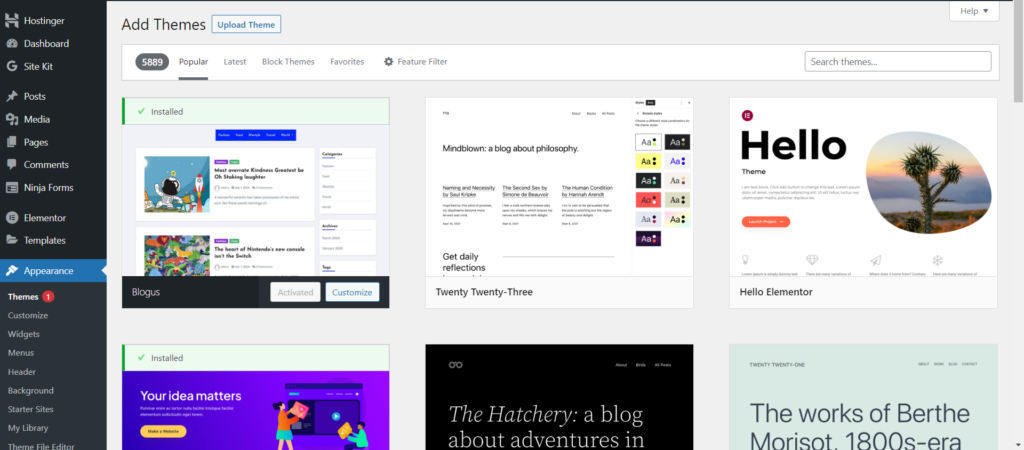Unlocking the Potential of Website Making Templates

In today’s digital age, having a strong online presence is essential for individuals and businesses alike. Whether you’re a blogger, entrepreneur, or a small business owner, creating a website is often the first step towards establishing yourself on the internet. However, not everyone possesses the technical skills to build a website from scratch. This is where website making templates come into play, offering a user-friendly and efficient solution to bring your online vision to life.
Understanding the Basics
What Are Website Making Templates?
Website making templates are pre-designed web page layouts that can be customized to suit your specific needs. These templates are created by skilled designers and developers, and they serve as a foundation for building your website. They are available for various platforms and content management systems (CMS), such as WordPress, Wix, Shopify, and more.
Why Choose Website Making Templates?
- Ease of Use: One of the most significant advantages of using website making templates is their simplicity. You don’t need to have coding expertise to create a professional-looking website.
- Time and Cost-Efficient: Designing a website from scratch can be time-consuming and expensive. Templates save you both time and money.
- Customizability: Despite being pre-made, templates offer a high degree of customization. You can personalize colors, fonts, images, and layout to match your brand identity.
- Mobile Responsiveness: Many templates are designed to be mobile-responsive, ensuring that your website looks great on all devices.
If you are looking a website builder for you please contact us
Choosing the Right Template
Factors to Consider
Before diving into website creation, it’s essential to choose the right template. Here are some factors to consider:
1. Purpose
Understanding your website’s purpose is the first crucial step in selecting the right template. Your choice will greatly impact the overall look, functionality, and user experience. For instance, if you plan to run an online store, opt for templates with e-commerce features, while a blog may require a layout optimized for content readability. A portfolio site benefits from showcasing your work effectively, while a corporate website should convey professionalism and credibility. Therefore, aligning your template choice with your website’s purpose ensures that it serves your goals and resonates with your target audience.
2. Design
Your website’s design is your digital storefront, and it’s essential to make it visually appealing. Choose a template that not only aligns with your brand but also reflects your aesthetic preferences. Consistency in design elements, such as color schemes, fonts, and imagery, creates a cohesive and memorable experience for your visitors. A visually pleasing website not only captures attention but also fosters trust and credibility. When visitors encounter an attractive design that resonates with them, it can leave a positive and lasting impression, increasing the likelihood of engagement and conversion.
3. Features
Evaluating your chosen template for essential features is crucial to unlock your website’s full potential. SEO optimization ensures that your site ranks well in search engines, driving organic traffic. Social media integration enables seamless sharing and engagement with your audience across platforms, expanding your online reach. If you plan to sell products or services, having e-commerce capabilities simplifies the transaction process for your customers, contributing to a more user-friendly and functional website. Incorporating these features into your template choice empowers your website to perform effectively and meet your goals.
4. Support and Updates
Ensure that the template you choose receives regular updates and offers customer support. This can be invaluable if you encounter any issues along the way.
Obtain financial-related information from here
Building Your Website
Once you’ve chosen the perfect template, it’s time to start building your website. Most website builders provide intuitive drag-and-drop interfaces that make the process easy and enjoyable. Here are the general steps:
1. Installation
Install the chosen template on your selected CMS platform. You can install the themes directly from the CMS themes section, or you can manually upload themes to the CMS.
Here is the example how you can Install theme from wordpress (Widely used CMS platform)
Installing the themes from themes store

By searching in the search bar we can select the and then we can download the themes we need.
2. Customization
Personalizing the template is where you truly make your website unique. Start by crafting compelling textual content that conveys your message effectively. Incorporate images and graphics that resonate with your brand or topic, ensuring they are high-quality and relevant to the content.
Additionally, consider the strategic placement of videos to engage your audience further. Videos can provide valuable information or entertainment, making your website more dynamic and appealing. Ensure that all multimedia elements are well-optimized for fast loading times and an excellent user experience. Customizing fonts, colors, and styles to match your brand’s identity adds that final touch of personalization, making your website truly your own.
3. Layout
Arranging the layout is crucial for a user-friendly and visually pleasing website. Ensure a logical flow of information, guiding visitors seamlessly from one section to the next. Maintain consistency in design elements for an attractive and effective user experience.
4. SEO Optimization
Optimizing your website for search engines is vital for better visibility. Incorporate relevant keywords strategically within your content, meta descriptions, and image alt tags. These actions help search engines understand your website’s content, improving your chances of ranking higher in search results. By doing so, you enhance your website’s discoverability and attract more organic traffic, ensuring your online presence reaches a broader audience.
5. Testing
To guarantee your website’s seamless performance, it’s essential to conduct thorough testing on various devices and browsers. This step ensures compatibility and a consistent user experience, regardless of whether visitors access your site on a computer, tablet, or smartphone, using different browsers like Chrome, Firefox, or Safari. Identifying and resolving any issues in advance prevents potential frustration for your audience, making certain that your website remains accessible and user-friendly for all.
Conclusion
In conclusion, website making templates are a game-changer for individuals and businesses looking to establish an online presence without the hassle of coding. They offer a wide range of benefits, including ease of use, cost-efficiency, and customization options. By selecting the right template and following a few simple steps, you can create a stunning website that effectively represents your brand or message to the world.